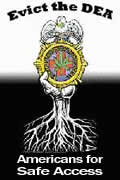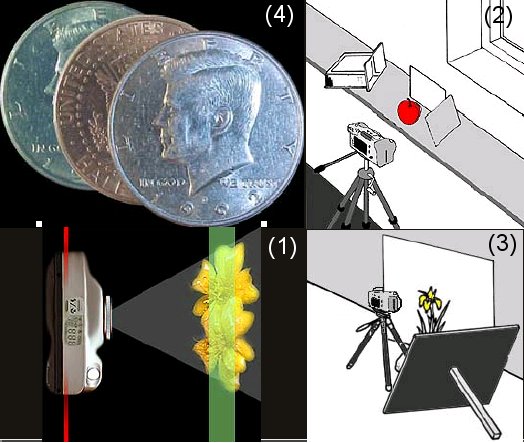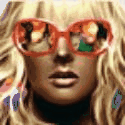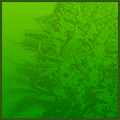|
We Update Daily!
 Custom Search Custom Search
Chris S. Kenoyer. Owner
MMJ Patient, Medical Activist,
Online Patients Advocate,
Online MMJ News Journalist
My Personal Medical Bio
Follow Us Now On Twitter
@MedicalMMJMan
Or Follow Us Now
On Facebook
Email Us Here
olpwebs@yahoo.com
Or Email Us Securely Here
MedicalMMJMan@countermail.com
NEW 100% Encrypted Email Server
OLP’s Free MMJ News EList
Get The Latest In MMJ News
Press Contact Info
Is CBD? A Possible Cure For
Breast Cancer..? And All The Other
Many Forms & Types Of Cancer..?
Learn More About CBD Here
***************************
Advertise Here On OnlinePot
Rates As Low As $50 a Year
24/7 – 365 Days A Year Of Sales!
***********************************
Website Navigational Links
Main Start Page 2
**************************
Latest Marijuana News Reports
*********************************
Parody’s Cartoons US
Government Grown Pot,
Term Papers, School
Reports, & Thesis’s On
Marijuana & Cannabis
*********************************
Amsterdam A to Z
********************************
Canadian Marijuana Websites
*******************************
Church’s & Pot Cannabis
*****************************
Co-Ops, Clinics, Dispensary’s
*****************************
Marijuana Doctors & Clinics
****************************
Pot Cooking Recipes
****************************
Drug Testing A To Z
***************************
Pot Games
****************************
Pot Songs Video’s
****************************
100’s Of Grow Guides
***************************
Hash A- Z
***************************
Cannabis Legal Info, Drug
Lawyers, State, Federal Laws,
State & Supreme Court Rulings
**********************
POW’s Of The MMJ War!
*****************************
Other Marijuana Websites
Reciprocal Link Exchange
****************************
Medical Marijuana Studies,
Research Report’s, Medical
Cannabis Clinic Study’s
****************************
Parody’s & Cartoons
When We All Need A Good Laugh!
****************************
Avoiding Online MOM Scammers
Newly Re-Updated Info!
*****************************
The Politics Of Contraband
Medical Marijuana In The Mail?
******************************
The Hall Of Shame Section
The Online MOM Scammers
*****************************
Online MOM Providers Ads
****************************
Politicians & Voters Rights
****************************
Medical Marijuana, Strains
****************************
The OG Marijuana Strain Guide
****************************
800+ FAQ Growing Questions
****************************
Patients Spiritual Guidance,
Free Online Crisis Help Center
****************************
Online Marijuana Seed Banks
****************************
Maximum Security Section
Just Updated!
*****************************
Traveling Tips, Guides, B & B’s
****************************
Vaporizers A To Z
*****************************
Online Pot Video’s & Movies
**********************************************
Please Visit Both Of Our Sister Websites!
Maine Patients Coalition.org
The Reefer Madness Teaching Museum.org
Listen Right Here Online!
To Original 1930-1950’s
Reefer Madness Propaganda
Radio Shows And Programs
Before TV There Were
"Radio Stars"



*********************************
Legal Disclaimer
Guest Book
Translate Text or Web Page Go To:
Language Tools Google Translations
Article Submissions & News
Reports Are Always Gladly
Accepted Here.

No part of this site maybe used or
reproduced in whole or in part
without the written consent of the
Copyright Owner
www.onlinepot.org
OLP ENTERPRISES LLC
1999-2013 Copyright
© All rights reserved
OnlinePot assumes no legal liability for any products, or information or
news posted, services offered, Or
any contests or give away’s offered.
|
|
GrowFAQ :
What is macro-photography and why should I use macro mode?
| Added by: MedMan Last edited by: 10k Viewed: 154 times |
Rated by 5 users: 10.00/10 |
Contributed by: C@tz
The term ?macrophotography? normally refers to images in which the subject is presented at a larger than normal size — a ratio greater than 1 to 1. True macrophotography, however, requires that the distance between the lens and the image plane be greater than the distance between the lens and the subject. For film cameras, macrophotography requires the use of special accessories such as bellows or macro adapters that will magnify the image. Special macro lenses, usually more expensive than their non-macro counterparts, are specially designed to get very close, and yet avoid distortions. Some telephoto lenses also offer a “macro” capability, by an optical formulation that allows the lens to still reach focus, while close to the subject.
One of the benefits of digital cameras is that many of them are able to do excellent macro photography. In certain cases, some cameras can come amazingly close to the subject, in others, the zoom is used to magnify the subject and fill the frame. Generally speaking, the shutter speeds will be very slow, and a stable platform is a good idea. Additionally, using the camera’s self-timer will prevent camera shake that can easily ruin a shot.
Extreme close-up views can be a lot of fun and also be very useful. Getting in close to an object will generally reveal details the eye tends to ignore. Familiar objects become unusual shapes, textures, and colours reminiscent of modern art or architecture. As mentioned earlier, an extreme close-up is the equivalent of looking at something with a magnifying glass. Details normally invisible suddenly jump out and can offer an increased appreciation of the subject. Your buds, for example, can be wonderful subjects. Whatever the use, macrophotography presents two major challenges: one is the shallowness of the depth of field a lens provides when it is very close to the subject, and the other is the difficulty encountered in lighting a subject evenly to avoid shadows.
Depth of field:
Depth of field refers to the correctly focused or sharp zone in an image. The depth of field is most affected by the aperture of a lens. A small aperture (larger f-numbers) provides a greater depth of field than a large aperture (small f-numbers). With compact cameras that do not offer the possibility of changing lenses, the camera and lens combination is also important, as each camera will have a specific minimum focus; check your manual to determine these specifications. Furthermore, most compact digital cameras do not allow the user to select the aperture the camera uses. This means that unless the subject is brightly lit, the camera will probably select a larger aperture, shortening the depth of field in the process. In many cases, this will be a sharp zone ranging from a few millimetres (fractions of an inch) up to approximately 10 cm (3″+).
To deal with a shallow depth of field it is important to position the subject and the camera so they are parallel to each other (see illustration at right). Maintaining as close to a parallel as possible is the best way to ensure that the depth of field stays uniform throughout the image. With the lenses commonly used with compact digital cameras, lens distortion can become pronounced in close-ups. Lens distortions such as barrelling and pin cushioning are the most common. If you notice distortion in a macro photo, it does not mean there is something wrong with the lens or your camera, only that the lens was not designed with macrophotography as its primary use. Simply avoid strong vertical or horizontal lines in your composition, or, use any distortion to enhance the image. Macrophotography and extreme close-ups often cause perspective distortions, just like wide-angle lenses do. The trick is to use them to your advantage.
Lighting:
The second challenge of macrophotography for the photographer is to provide even lighting to the subject of the image. This can become quite difficult when the camera is very close to the subject. Often, flash cannot be used effectively as it will either alter the colour of the photo or, more likely, cause an overexposure by being too close to the subject. In these cases, it is best to turn off the flash, and provide another source of light. When outside, sunlight and one or two small mirrors acting as reflectors can be used successfully to remove shadows. Indoors, good results can be obtained with everyday household lamps and with simple reflectors. Note though, that you may have to correct the image’s colour to reduce the yellow light incandescent lighting will add. If mirrors are not available, a piece of white cardboard will work well, reflecting the light softly on the subject. Another variation involves wrapping the cardboard with shiny aluminium foil to increase its reflectivity. If necessary, more reflectors can be used so the light is distributed equally on the object. If your camera has a zoom lens, you may not have to be extremely close to the subject. This is particularly useful in cases where it is impossible to light the object properly, an optical zoom allows you to move the camera back, light the subject properly and still get a full-frame image. Beware of camera shake when using a zoom to do close-ups, it is often advisable to stabilise the camera on a tripod.
(1) The red line indicates the focal plane and the
green zone the focusing plane.
(2) Small pieces of reflective cardboard and a mirror are
used to light the subject evenly. The tripod stabilises
the camera.
(3) Here, the flower is lit by natural light. The use of
white cardboard spreads the light , eliminating harsh shadows.
(4) The same coin with three different light sources
Bottom: halogen and flash.
Middle: halogen only.
Top: flash only.

A digital camera is one of the best ways to take macro pictures; some cameras are able to get as close as an inch (2 to 3 cm). The added bonus of being able to see the image instantly means that it is possible to improve it easily if needed. Experimentation is the best guide, so go ahead, and see what your camera can do!
|
| Last modified: 23:32 – Dec 07, 2001 |
|
|
Quicklink: http://overgrow.com/growfaq/1184
GrowFAQ © 2000-2004 Overgrow
faq:1184 “What is macro-photography and why should I use macro mode?” |
|
|
|
|
|



 Button Ads!
Button Ads! 





